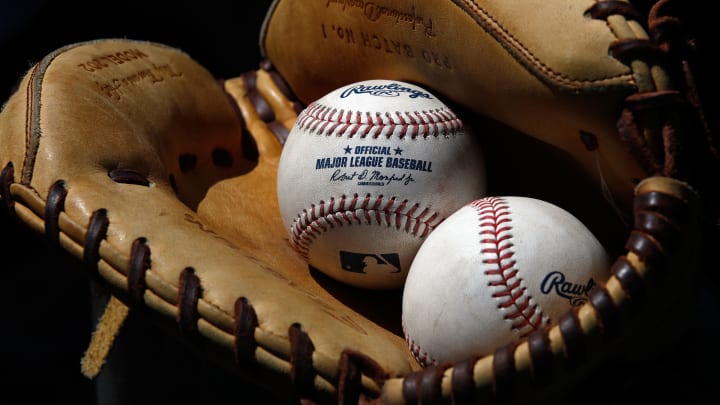Using Statistics to Evaluate: The Greatest Catcher in Chicago Cubs History

Some honors are easy to bestow. Everybody knew that upon Albert Pujols' retirement after the 2022 season he'd be voted a Hall of Famer, perhaps unanimously. Others are less simple. For example, five different men received first place votes in 2022 NL Manager of the Year balloting.
The decision for best catcher in Chicago Cubs history falls into the former category. Gabby Hartnett doesn't exactly have a lot in common with Albert Pujols, but he is undoubtedly the best catcher in Cubs history.
Sure, Johnny Kling, Jody Davis and Willson Contreras all etched their place in Cubs lore, but Harnett is a cornerstone of Chicago myth.
Most notably, he is known for the "Homer in the Gloamin'", perhaps the best named home run in Major League Baseball history.
We covered the history of that home run in our On This Day in Cubs History series.
But the crux of the story comes down to this:
The Cubs entered September 1938 trailing the Pittsburgh Pirates atop the National League by six and a half games. Chicago surged in the standings for four weeks, and found themselves half a game behind the Pirates at Wrigley Field in a tie ball-game as dusk began to fall on Sept. 28.
The umpires declared that the game would be called on account of darkness after the ninth inning. And with two outs and none out Hartnett stepped to the plate. Down to his last strike, on an 0-2 count, Harnett drove a ball into the left field bleaches, winning the game and sending the 34,465 sellout crowd into raptures.
The Cub went on to be swept in four games by the New York Yankees in the World Series, and Hartnett went on to retire four years later at the age of 40.
1938 was his last season as an All-Star, he had participated in every game since the inception of the Mid-Summer Classic.
By the time his career officially ended in 1940, Harnett's trophy case was stocked with an MVP Award, four NL Pennants — though no World Series rings — and six All-Star nominations, among other minor achievements. Had he played in today's game, that shelf would be chock full of Silver Slugger and Gold Glove Awards.
Hartnett's career slashline was .297/.370/.490. He hit 236 home runs after starting his career at the end of the Deadball ERA in 1936. Only 165 of his career 7300 plate appearances came with a team other than the Cubs.
His 55.9 career rWAR is more than double the Cubs' next top earner at catcher — Contreras has only 20.8 career rWAR.
It’s hardly fair to compare Hartnett with other Cubs catchers because he's so far ahead of the rest of the pack.
Contreras is the next best offensive catcher in Cubs history after Harnett, his career OPS is .808, his wRC+ is 114 and his OPS+ is 115.
82 years prior Harnett ended his career with an .858 OPS, 127 wRC+ and 126 OPS+, not to mention his 78 defensive runs saved. DRS is an especially fickle stat, especially for catchers, and even more so for a catcher who played in the 1920s, but Hartnett's total was so high that we assume he was a good fielder too.
All of those accolades added up, and eventually, 15 years after his retirement, Hartnett was inducted into the MLB Hall of Fame by the BBWAA.
In the end, Hartnett may share one more thing with the most prolific home run hitter of our era, both will be Hall of Famers.
More From SI's Inside The Cubs
- Could Mike Trout Request a Trade to the Chicago Cubs?
- Did David Robertson Net the Cubs a Future Star in Ben Brown?
- Hoerner is the Cubs Shortstop of the Future
- Cubs Could Give Canario a Shot in September
- Could the Cubs Land Trea Turner in the Offseason?
- Chicago Cubs Have a New Top Prospect in Their Rankings
- Is This Top Cubs Prospect Destined for the Mound at Wrigley?
- Steele Offers Glimpse Into Future of Cubs Rotation
- Do the Chicago Cubs Have the National League's Best Bullpen?
- Can Christopher Morel be a Long-Term Solution in Center Field?
Make sure to follow Inside the Cubs on Twitter!
